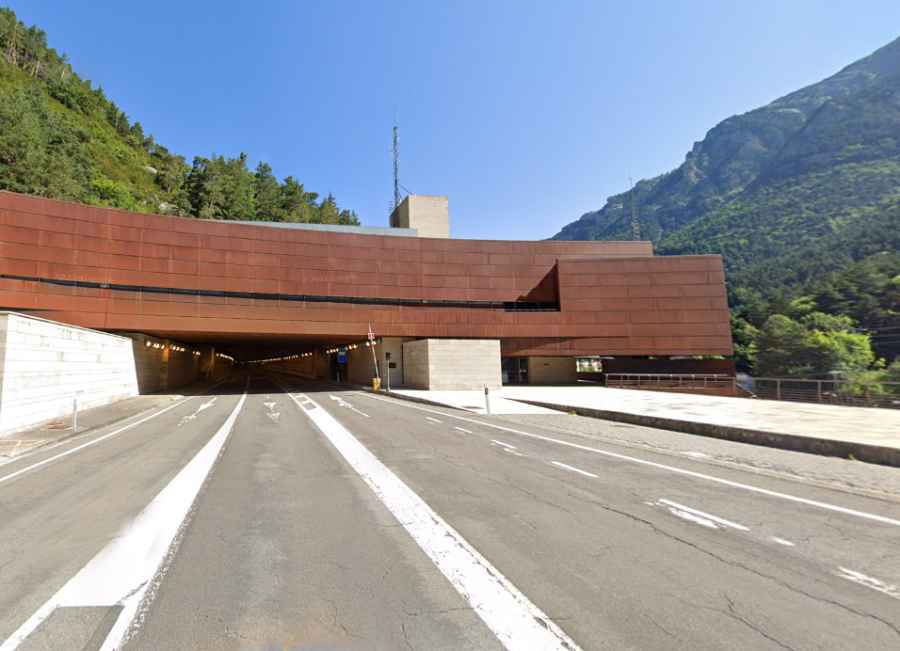What are the 5 longest road tunnels in Spain?
Tunnels on roads are complex engineering structures that require careful planning, execution, and maintenance, as they involve drilling into the subsurface while ensuring the safety and comfort of users traveling through them. Additionally, tunnels have environmental and economic impacts that must be assessed and minimized.

In this article, we will learn about the five longest road tunnels in Spain, according to data from the Ministry of Transport, Mobility, and Urban Agenda.
Somport Tunnel
It is the longest tunnel in Spain, with a length of 8.6 kilometers (5.34 miles), of which 5.76 kilometers (3.58 miles) are in Spanish territory and the rest in France. It connects the N-330 and N-134 roads, forming part of the trans-European route E-7. Inaugurated in 2003 after nearly a decade of construction, it replaced the old railway tunnel that ceased operations in 1970. The Somport tunnel allows crossing the Pyrenees at an elevation of 1,183 meters (3,881 feet), avoiding the Puerto de Somport-Col du Somport that rises to 1.637m (5,370ft). This reduces travel time, fuel consumption, and emissions of pollutants. The tunnel has two lanes, each 3.5 meters (11.48 feet) wide, and a ventilation, lighting, and security system controlled from an operations center located at the Spanish entrance.
Viella Tunnel
It is the second-longest tunnel in Spain, with a length of 5.23 kilometers (3.25 miles). It connects the N-230 and C-28 roads, crossing the Maladeta massif in the Catalan Pyrenees. Inaugurated in 1948 after 16 years of construction, it was the first long tunnel built in Spain. The Viella tunnel provides access to the Aran Valley, an area of great tourist and cultural interest, at an elevation of 1,605 meters (5,266 feet), avoiding the mountain pass that rises to 2,407 meters (7,897 feet). The tunnel has a single lane, 3.5 meters (11.48 feet) wide, and a traffic light system that regulates the alternating passage of vehicles. Due to its age and limited capacity, a new parallel tunnel named Juan Carlos I was opened in 2007, with a length of 5.2 kilometers (3.23 miles) and two lanes, each 3.5 meters (11.48 feet) wide.
Cadí Tunnel
It is the third-longest tunnel in Spain, with a length of 5.02 kilometers (3.12 miles). It connects the C-16 and C-26 roads, crossing the Cadí range in the Catalan Pre-Pyrenees. Inaugurated in 1984 after six years of construction, it was the first toll tunnel built in Spain. The Cadí tunnel connects the provinces of Barcelona and Lleida, providing access to the Cadí-Moixeró Natural Park, an area of great ecological and landscape value, at an elevation of 1,215 meters (3,986 feet), avoiding the Collada de Toses mountain pass that rises to 1.800m (5,905 ft). The tunnel has two lanes, each 3.5 meters (11.48 feet) wide, and a ventilation, lighting, and security system controlled from an operations center located at the southern entrance.
Bracons Tunnel
It is the fourth-longest tunnel in Spain, with a length of 4.95 kilometers (3.07 miles). It connects the C-37 and C-63 roads, crossing the Bracons range in the Catalan Pre-Pyrenees. Inaugurated in 2009 after four years of construction, it is the second toll tunnel built in Spain. The Bracons tunnel connects the regions of Osona and La Garrotxa, providing access to the Garrotxa Volcanic Zone Natural Park, an area of great geological and biological interest, at an elevation of 830 meters (2,723 feet), avoiding the Collada de Bracons mountain pass that rises to 1,136m (3,727ft) above sea level. The tunnel has two lanes, each 3.5 meters (11.48 feet) wide, and a ventilation, lighting, and security system controlled from an operations center located at the northern entrance.
Negrón Tunnel
It is the fifth-longest tunnel in Spain, with a length of 4.1 kilometers (2.55 miles). It connects the AP-66 and N-630 roads, crossing the Cantabrian mountain range in the Principality of Asturias. Inaugurated in 1997 after three years of construction, it is part of the toll highway that connects León and Oviedo. The Negrón tunnel allows crossing the watershed between the Duero and Cantabrian basins, at an elevation of 1,040 meters (3,412 feet), avoiding the mountain pass that rises to 1,570 meters (5,151 feet). The tunnel has two lanes, each 3.5 meters (11.48 feet) wide, and a ventilation, lighting, and security system controlled from an operations center located at the Asturian entrance.